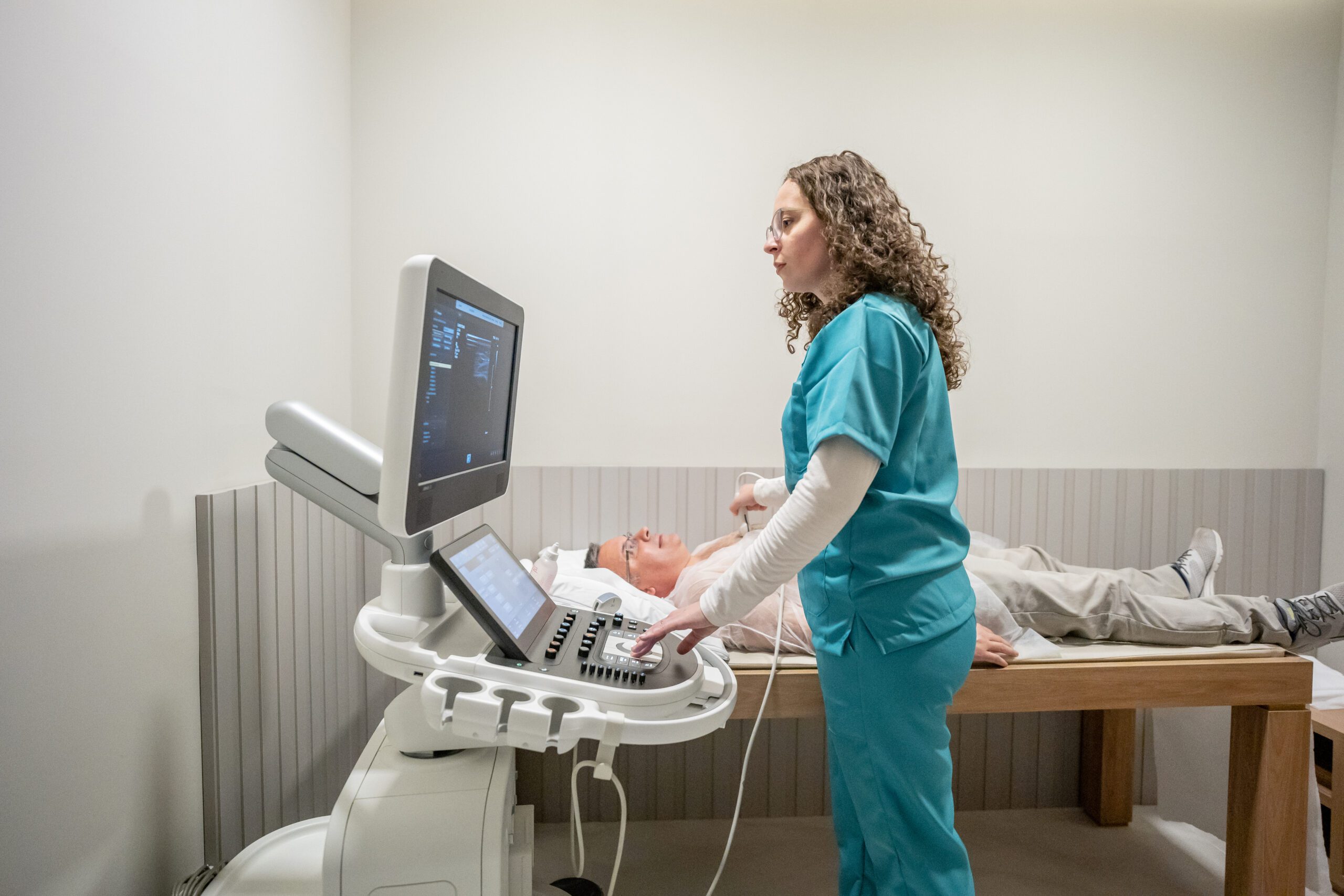So, just how long does it take to become a cardiologist? The journey is a long one. But it’s a thrilling and rewarding career path. If you’ve decided cardiology is the field you want to specialize in, congratulations! It not only offers immense professional satisfaction, but also provides opportunities to make a significant impact on patients’ lives.
In this post, we’re going to break down the cardiology career path for you, so you get an excellent sense of just how long it will take you to achieve your dream. First though, let’s lay out some of the different cardiology career options, so you can get an idea of the opportunities that are out there.
Here are the different cardiology career paths you can choose from.
Still deciding which specialty to pursue? Find your path in medicine with the FREE Medical Specialties Breakdown Guide! Go beyond the data with qualitative insights from residents, practicing physicians, and med school tutors who have been in your shoes.
What Are the Career Opportunities for a Cardiologist?
Cardiology is a diverse field with numerous subspecialties, including:
- General Cardiology: General cardiologists focus on preventing, diagnosing, and treating heart and blood vessel conditions.
- Interventional Cardiology: Interventional cardiologists perform minimally invasive procedures like angioplasty and stent placement.
- Electrophysiology: An electrophysiology cardiologist specializes in diagnosing and treating heart rhythm disorders.
- Heart Failure and Transplant Cardiology: As the name suggests, cardiologists in this specialty manage advanced heart failure and patients undergoing heart transplantation.
- Pediatric Cardiology: Pediatric cardiologists treat congenital heart defects and heart conditions in children.
These are just a few of the paths you can take! Each offers the chance to specialize further, provide targeted care to various patient populations, and has a unique set of challenges and rewards.
But how long will it all take?
Journey to Becoming a Cardiologist
Regardless of the specific field you go into, the path to becoming a cardiologist is a lengthy one, often taking around 14 years on average.
Here’s a detailed breakdown:
1. Premedical Experiences (4 Years of Undergrad)
Your first step is completing an undergraduate degree, which typically takes four years. While many students major in biology or chemistry, you can choose any major, as long as you complete the prerequisite courses required for medical school.
These usually include:
- Biology
- Chemistry (General and Organic)
- Physics
- Mathematics
Alternative Paths
Don’t be discouraged if you take a nontraditional path to medical school. Your unique experiences can enrich your personal statement and interview stories. However, you will still need to complete the prerequisite courses and pass the Medical College Admission Test (MCAT). Post-baccalaureate programs are available to help fulfill these requirements for those who decide to pursue medicine after college.
2. Medical School (4 Years)
Medical school is divided into two main phases:
Preclinical Years
The first two years are your preclinical years, when you’ll learn the foundational sciences and medical principles through classroom instruction and laboratory work. Subjects include:
- Anatomy
- Physiology
- Biochemistry
- Pharmacology
Clinical Years
The next two years are your clinical years, when you’ll rotate through various medical specialties, including internal medicine, surgery, pediatrics, and of course, cardiology. During this time, it’s crucial to gain exposure to cardiology and build connections with mentors in the field.
During these years, you’ll apply for internal medicine residency programs that set the foundation for your future in cardiology.
3. Residency (3 Years in Internal Medicine)
After medical school, you’ll enter a three-year internal medicine residency program. Each year of residency has its own focus.
Here’s what you can expect:
- First Year (Intern Year): This is when you’ll gain broad exposure to various medical conditions and treatments.
- Second Year: Now your responsibilities will increase, and you’ll start supervising junior residents and medical students.
- Third Year: This is when you’ll focus more on your interests and prepare for board examinations.
Upon completing your residency, you’ll need to pass the internal medicine board exam to become board-certified in internal medicine. This certification is a prerequisite for entering a cardiology fellowship.
4. Fellowship (3 Years)
Next, you’ll apply for a cardiology fellowship, which typically lasts three years. During this time, you’ll receive specialized training in diagnosing and treating cardiovascular diseases. Your fellowship will involve:
- Clinical Rotations: These provide hands-on experience in various cardiology subspecialties.
- Research: Make discoveries that advance knowledge in the field.
- Procedures: Learn about and perform different cardiovascular procedures and techniques.
Advanced Specialties
If you wish to further specialize, you can pursue additional training in areas like:
- Interventional Cardiology (1-2 years)
- Electrophysiology (1-2 years)
- Heart Failure and Transplant Cardiology (1 year)
- Cardiac Surgery (2-3 years)
- Advanced Heart Failure and Transplant Cardiology (1-2 years)
The Final Verdict…
As you now know, it typically takes around 14 years to become a cardiologist, from start to finish. This includes four years of undergraduate education, four years of medical school, three years of internal medicine residency, and three years of cardiology fellowship.
Becoming a cardiologist is a long and challenging journey, but it’s incredibly rewarding. You have the opportunity to make a significant impact on patients’ lives, and work in a field that’s constantly advancing. If you’re committed and passionate about cardiology, the effort will be well worth it!
Ready to take the next step in your medical career? Connect with a residency counselor and start planning your path toward becoming a cardiologist today!





